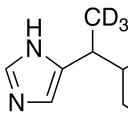Increased expression of GATA zinc finger domain containing 1 through gene amplification promotes liver cancer by directly inducing phosphatase of regenerating liver 3.
Кључне речи
Апстрактан
We identified that GATA zinc finger domain containing 1 (GATAD1), a transcriptional factor, was significantly up-regulated in hepatocellular carcinoma (HCC) through gene amplification. We demonstrated the critical role, molecular mechanisms, and clinical implications of GATAD1 as a novel oncogenic factor in HCC. We found that GATAD1 protein was expressed in 76.6% of primary HCCs (85/111) but silenced in normal liver tissues. Gene amplification of GATAD1 was positively correlated with its overexpression in primary HCCs (R = 0.629, P < 0.0001). GATAD1 significantly increased cell proliferation, G1 -S cell cycle transition, and migration/invasion but suppressed apoptosis in liver cell lines and promoted tumor growth and lung metastasis in both xenograft and orthotopic mouse models. Mechanistically, GATAD1 induced the transcriptional expression of phosphatase of regenerating liver 3 (PRL3) by binding to its promoter identified by RNA sequencing and chromatin immunoprecipitation-PCR analyses. PRL3 played an oncogenic role in HCC. Knockdown of PRL3 blunted the tumorigenic effect of GATAD1. In addition, GATAD1 activated Akt signaling, evidenced by increased phosphorylation levels of total Akt, Akt1, Akt2, and Akt target glycogen synthase kinase 3β, while knockdown of PRL3 abolished this effect of GATAD1. We further unveiled that PRL3 activated Akt signaling by dephosphorylating phosphatase and tensin homolog at tyrosine residue, thus reducing phosphatase and tensin homolog protein. The PRL3 inhibitor 5-[[5-bromo-2-[(2-bromophenyl)methoxy]phenyl]methylene]-2-thioxo-4-thiazolidinone significantly suppressed HCC growth by inhibiting Akt activation. Moreover, high GATAD1 nuclear protein expression was associated with poor survival of HCC patients as an independent prognostic factor.
GATAD1 plays a pivotal oncogenic role in HCC by directly inducing PRL3 transcription to activate the Akt signaling pathway. GATAD1 may serve as an independent poor prognostic factor for HCC patients. (Hepatology 2018;67:2302-2319).




